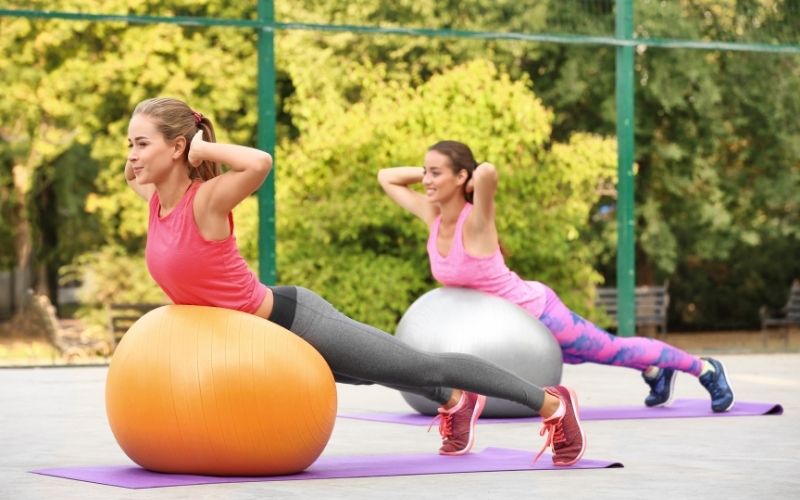If you’re a regular gym rat, you know how important a bench can be to carry out smooth workouts.
Benches provide the foundation and stability necessary for certain exercises, and it helps keep your body aligned with the exercise being done, while also giving you that extra height when needed.
But when you don’t have access to a bench, there are still other alternatives you can try out that can essentially serve the same purpose.
If you’ve been working out at home, you can DIY your own workout bench, like using the couch, a stable chair, or a dining table bench.
A really effective alternative to a bench for workouts is using an exercise ball. It may sound counter-intuitive, as exercise balls are not exactly stable.
However, they do help you become more focused while exercising and can help with your overall posture.
So, how exactly do you use an exercise ball instead of a bench for workouts?
Here’s everything you need to know about replacing a bench with an exercise ball for workouts and how to use them effectively.
Table of Contents
- Can I Use an Exercise Ball Instead of a Bench for Workouts?
- Why Use an Exercise Ball Instead of a Bench for Workouts?
- How to Choose the Right Size and Type of Exercise Balls
- How to Use the Exercise Ball for Workouts
- What Can I Use if I Don’t Have a Workout Bench?
- How to Avoid Injury While Using an Exercise Ball as Your Fitness Equipment
- Conclusion
Can I Use an Exercise Ball Instead of a Bench for Workouts?
Yes, you can!
An exercise ball is an excellent alternative to using a bench when working out. You can use it for various exercises, including crunches, lunges, and squats, and even weight training.
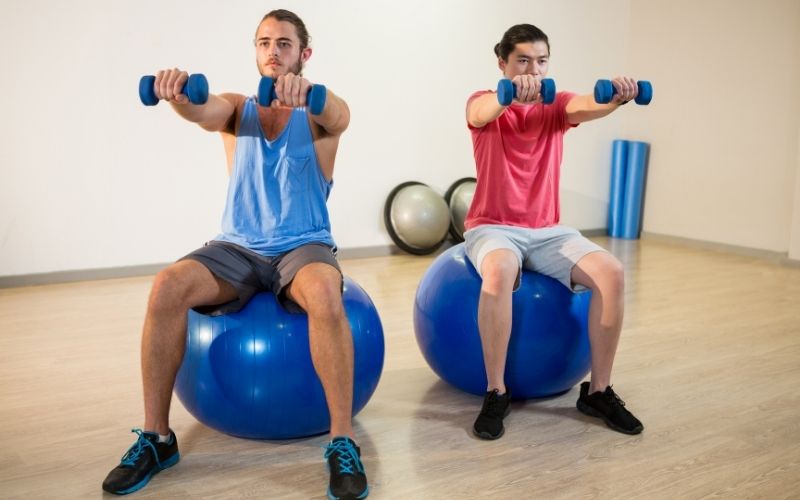
Exercise balls come in various shapes and sizes, with some even having handles, making them more like workout tools than just an accessory. They are also affordable and easy to store.
So, if you are looking to switch up your workout routines a bit, do your usual exercises on an exercise ball, and you’ll notice changes in how the same exercises affect your body.
Is Sitting on an Exercise Ball an Exercise?
Surprisingly, yes! Because sitting on an exercise ball does require some amount of active effort.
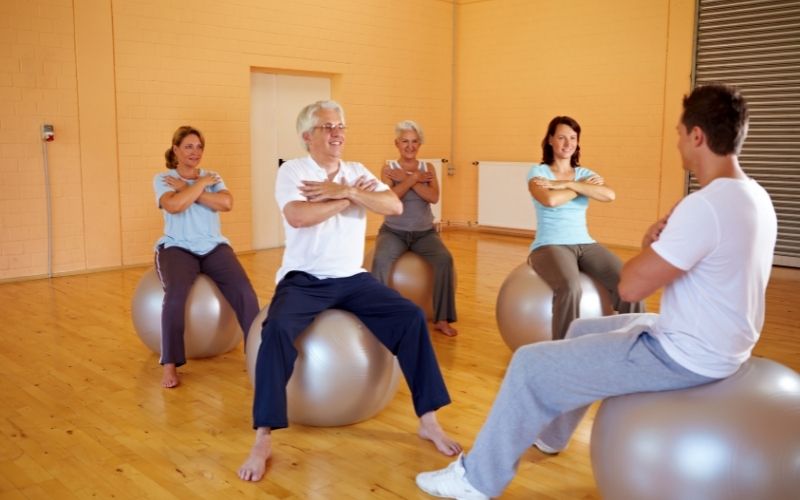
To maintain balance and be centered on the ball, you need to engage your core muscles consistently. Exercise balls provide a lot of benefits such as stability, alignment, and height adjustability (depending on the size).
When you initially use an exercise ball, it is better to sit on it for 30 minutes with your feet flat on the ground to get accustomed to it. You can then gradually incorporate different exercises.
Why Use an Exercise Ball Instead of a Bench for Workouts?
An exercise ball can challenge your balance, which will require you to engage specific muscles that will improve your core strength.
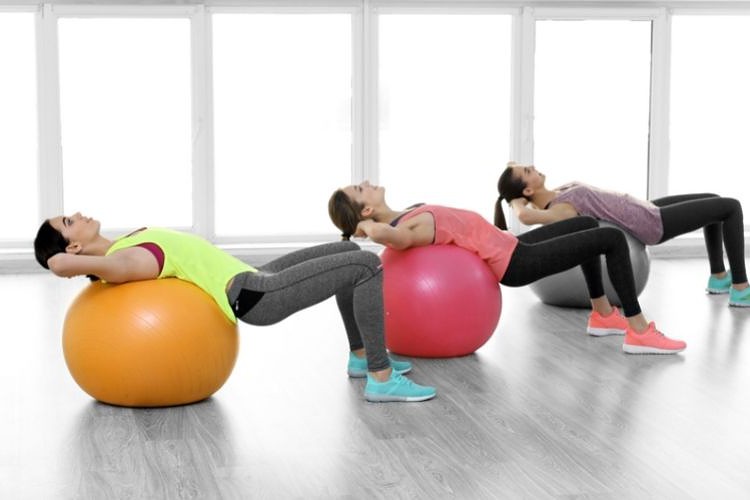
Your body will also learn to move correctly when performing certain exercises on an exercise ball, leading to better overall workouts.
Weight training on an exercise ball is an excellent way to improve balance, strength, and flexibility. It also gives you more alternatives for your traditional exercises that are done on the floor.
How to Choose the Right Size and Type of Exercise Balls
Exercise balls are a great tool for working out and staying fit.
They can be used as chairs or weights, depending on what you want them to do. And choosing an exercise ball of the right size will help carry out an optimal workout that’s just right for your needs.
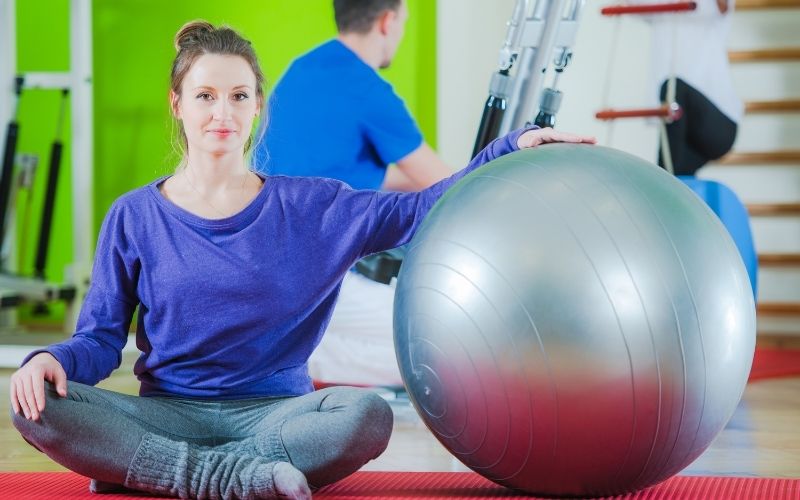
Make sure to pick an exercise ball that is the right size for your height.
Use this guide to choose the right size for you:
- 45 cm = Height under 5′
- 55 cm = Height between 5′ and 5’5″
- 65 cm = Height between 5’6 and 6’2″
- 75 cm = Height over 6’2″
Apart from your height, several other elements also need to be considered.
Here are a few quick checks you can do to make sure you’ve got the right exercise ball:
- The bottoms of your thighs must be parallel to the floor or slightly inclined down.
- When you sit on your exercise ball, your legs should be at 90 degrees or slightly higher, not less.
- Your knees must be at an even level with or lower than your hips when your feet are flat on the ground, and your back should be straight, not bending forward, backward, or sideways.
The right size depends on your weight, height, and how you want to use the ball.
For example, a larger person may require a higher-weight rated product than someone petite, so it’ll last longer.
Also, pay attention to what kind of workouts you plan on doing with the ball.
How to Use the Exercise Ball for Workouts
Here are some great exercise ball workouts that you can do anywhere. These will help improve your balance, flexibility, and core strength while building your muscles:
- Exercise ball hamstring curl
- Exercise ball V-pass
- Exercise ball wall squat
- Russian twist
- Exercise ball single leg glute raise
- Exercise ball “I-Y-T” shoulder raise
- Exercise ball hamstring floor tap
- Single-leg exercise ball hip thrust
- Exercise ball deadbug
What Can I Use if I Don’t Have a Workout Bench?
As we’ve seen in this article, an exercise ball is an excellent option to use if you’re used to working out on a bench and don’t have access to it anymore.
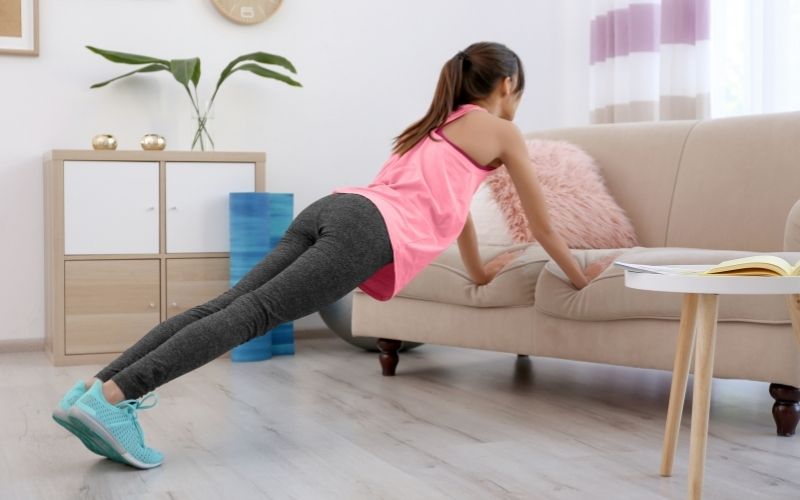
You can also use other home furniture such as a table, couch, or chair. Just make sure they are stable and of the appropriate height.
If your form starts bending at the knees or ankles due to too much pressure, that means there’s something wrong.
Also, using an unfamiliar instrument might not work for some people in their fitness routine.
How to Avoid Injury While Using an Exercise Ball as Your Fitness Equipment
Fitness equipment is aimed at helping people strengthen their health and fitness. But any workout equipment, if defective, can cause accidents.
Exercise balls can be an enjoyable addition to your exercises and are an excellent way to help people improve their balance, strength, and flexibility. The downside is that they’re easily damaged and pose risks of injury from misuse.
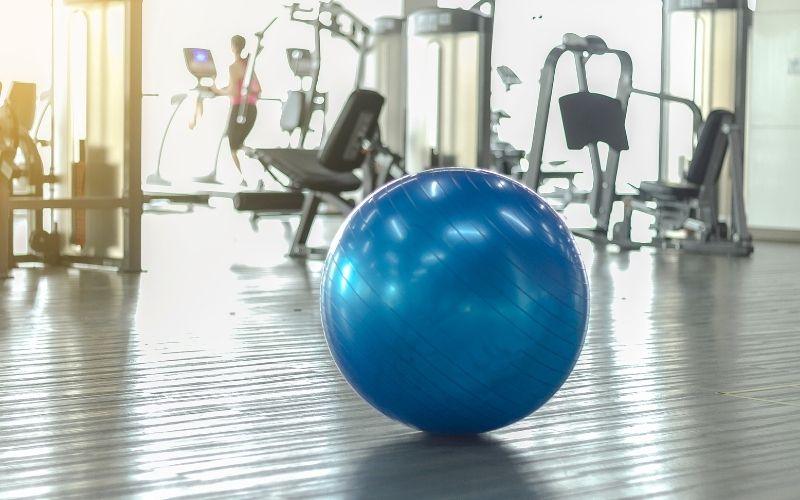
Below are some safety tips when using an exercise ball instead of a workout bench.
Safety Tips When Using an Exercise Ball
- Check your exercise balls for any damage or scratches before use. This will help you identify issues in time, so you can fix them quickly and help prevent potential injury.
- Store your exercise ball in a cool area, like inside your house. You should also avoid direct sunlight and sources of heat to prolong its lifespan.
- The effectiveness of an exercise ball can vary based on the floor surface. Seek advice from a professional before using the product on carpeted or wooden floors.
- Keep exercise balls away from sharp edges to avoid damage.
- Make sure you use them in an area with few or no other pieces of equipment or objects that can cause injury.
- Do not use exercise balls for physical exercises that require striking, kicking, or hurling.
- If you find a scratch on your exercise ball, do not attempt to fix it. It may be better to replace the ball rather than try to extend its life with temporary fixes that could put you in danger.
- Clean your exercise ball regularly. If you don’t clean it, the chemicals can damage and break down over time, rendering the ball useless.
Conclusion
It’s easy to get carried away with the latest fitness trends. So, when you want to use a bench but don’t have access to one, that shouldn’t stop you from exercising.
An exercise ball can be an easy switch that can even improve your workout.
Focus on enjoying yourself during the exercise instead of worrying about getting new equipment.
Just make sure that whichever type of workout you prefer is done safely and under professional guidance to reduce any risk of an injury down the line.

My name is Vance, and I am the owner of To Ergonomics. Our mission is to improve your workflow by helping you create a supportive and welcoming environment. We hope that you’ll find what you’re looking for while you’re here.

